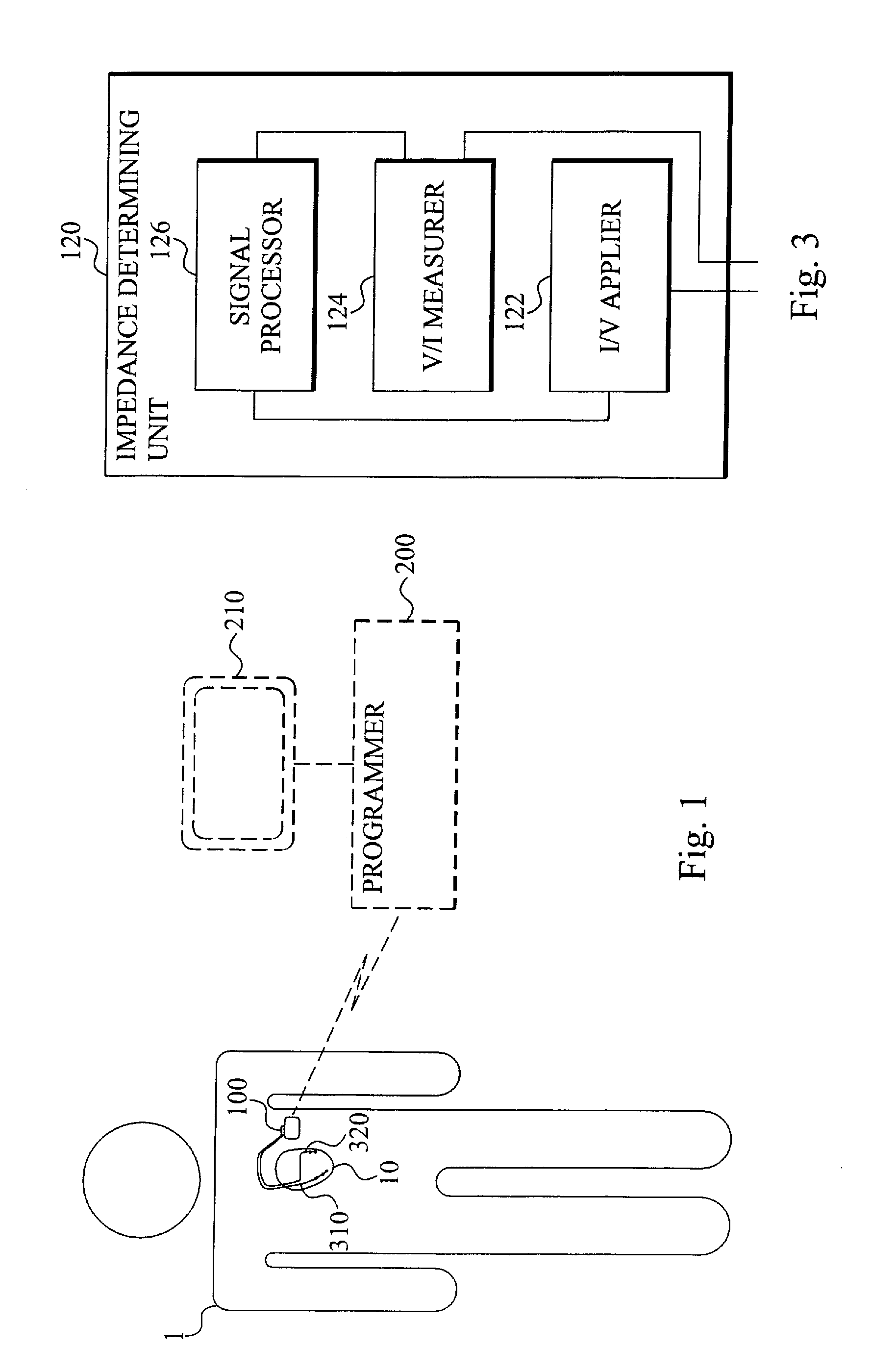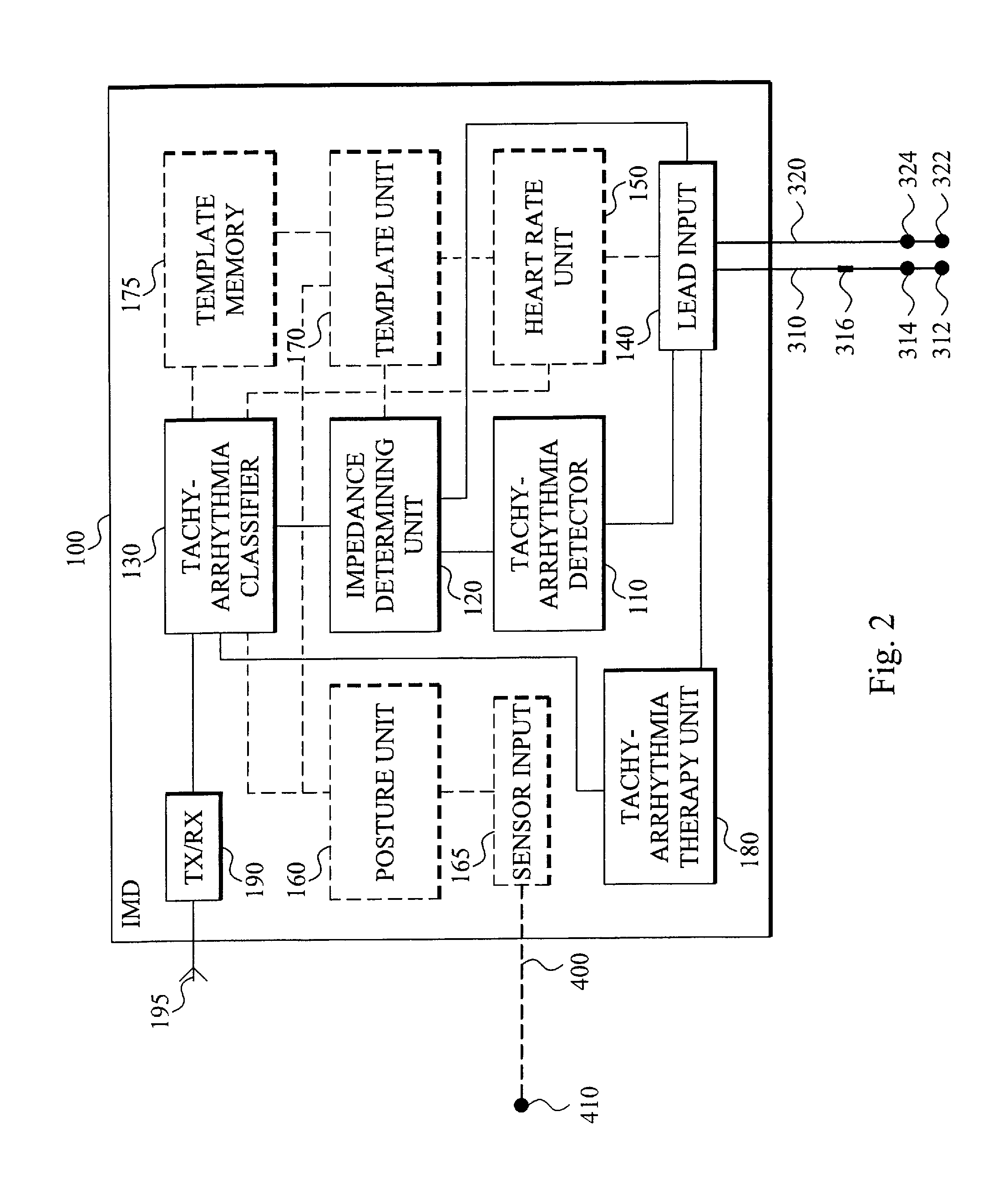Implantable medical device and a method comprising means for detecting and classifying ventricular tachyarrhythmias
a technology of ventricular tachyarrhythmia and medical device, applied in the field of heart conditioning, can solve the problems of unstable ventricular tachyarrhythmias that are lethal to the patient, the detection of tachyarrhythmias and the application of shocks, and the detection techniques of today are not able to discriminate, so as to achieve the effect of reliable discrimination
- Summary
- Abstract
- Description
- Claims
- Application Information
AI Technical Summary
Benefits of technology
Problems solved by technology
Method used
Image
Examples
Embodiment Construction
[0039]The present invention generally relates to implantable medical devices and methods for detecting and classifying different forms of ventricular tachyarrhythmia.
[0040]As is known in the art, ventricular tachyarrhythmia relates to medical conditions in which the electrical activity of the heart is irregular and / or faster than normal and where the abnormal activity originates from or is caused by the left and / or right ventricle. Ventricular tachyarrhythmias are traditionally defined as ventricular tachycardia, ventricular flutter and ventricular fibrillation.
[0041]Ventricular tachycardia is a potentially life threatening cardiac tachyarrhythmia originating in the ventricles. The tachycardia is characterized by increased heart rate, often in the interval of 120 to 250 beats per minutes. It may degrade into the more serious ventricular fibrillation.
[0042]Ventricular flutter is a ventricular tachyarrhythmia characterized electrocardiographically by smooth undulating waves with QRS c...
PUM
 Login to View More
Login to View More Abstract
Description
Claims
Application Information
 Login to View More
Login to View More - R&D
- Intellectual Property
- Life Sciences
- Materials
- Tech Scout
- Unparalleled Data Quality
- Higher Quality Content
- 60% Fewer Hallucinations
Browse by: Latest US Patents, China's latest patents, Technical Efficacy Thesaurus, Application Domain, Technology Topic, Popular Technical Reports.
© 2025 PatSnap. All rights reserved.Legal|Privacy policy|Modern Slavery Act Transparency Statement|Sitemap|About US| Contact US: help@patsnap.com



